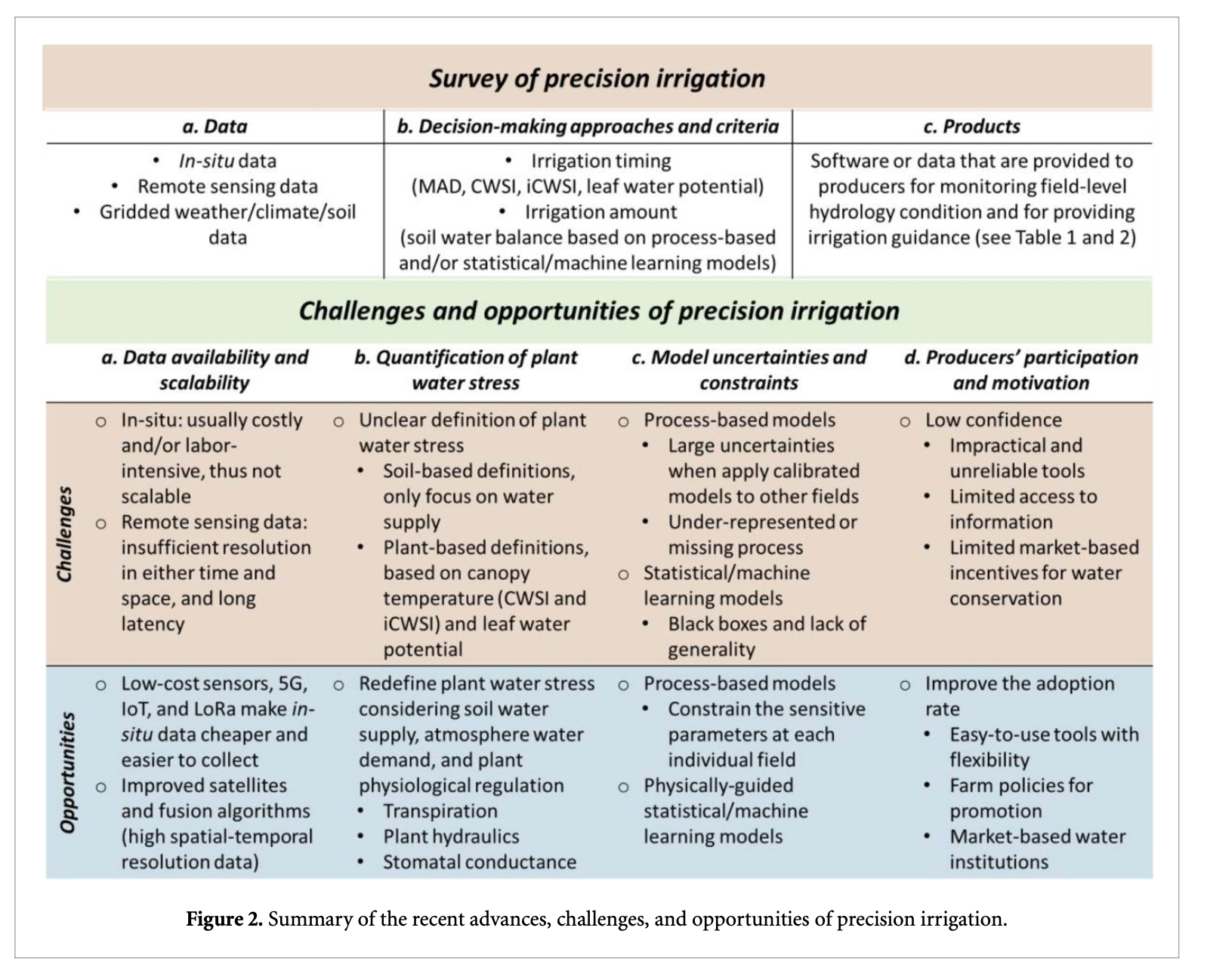Challenges and opportunities in precision irrigation decision-support systems for center pivots

Zhang, J., Guan, K., Peng, B., Jiang, C., Zhou, W., Yang, Y., Pan, M., Franz, T., Heeren, D., Rudnick, D., Abimbola, O., Kimm. H, Caylor, K., Good, S., Khanna, M., Gates, J., Cai, Y.(2021) Challenges and opportunities in precision irrigation decision-support systems for center pivots . Environmental Research Letters, 10.1088/1748-9326/abe436
Abstract:Irrigation is critical to sustain agricultural productivity in dry or semi-dry environments, and center pivots, due to their versatility and ruggedness, are the most widely used irrigation systems. To effectively use center pivot irrigation systems, producers require tools to support their decision-making on when and how much water to irrigate. However, currently producers make these decisions primarily based on experience and/or limited information of weather. Ineffective use of irrigation systems can lead to overuse of water resources, compromise crop productivity, and directly reduce producers’ economic return as well as bring negative impacts on environmental sustainability. In this paper, we surveyed existing precision irrigation research and tools from peer-reviewed literature, land-grant university extension and industry products, and U.S. patents. We focused on four challenge areas related to precision irrigation decision-support systems: (a) data availability and scalability, (b) quantification of plant water stress, (c) model uncertainties and constraints, and (d) producers’ participation and motivation. We then identified opportunities to address the above four challenge areas: (a) increase the use of high spatial-temporal-resolution satellite fusion products and inexpensive sensor networks to scale up the adoption of precision irrigation decision-support systems; (b) use mechanistic quantification of ‘plant water stress’ as triggers to improve irrigation decision, by explicitly considering the interaction between soil water supply, atmospheric water demand, and plant physiological regulation; (c) constrain the process-based and statistical/machine learning models at each individual field using data-model fusion methods for scalable solutions; and (d) develop easy-to-use tools with flexibility, and increase governments’ financial incentives and support. We conclude this review by laying out our vision for precision irrigation decision-support systems for center pivots that can achieve scalable, economical, reliable, and easy-to-use irrigation management for producers.
